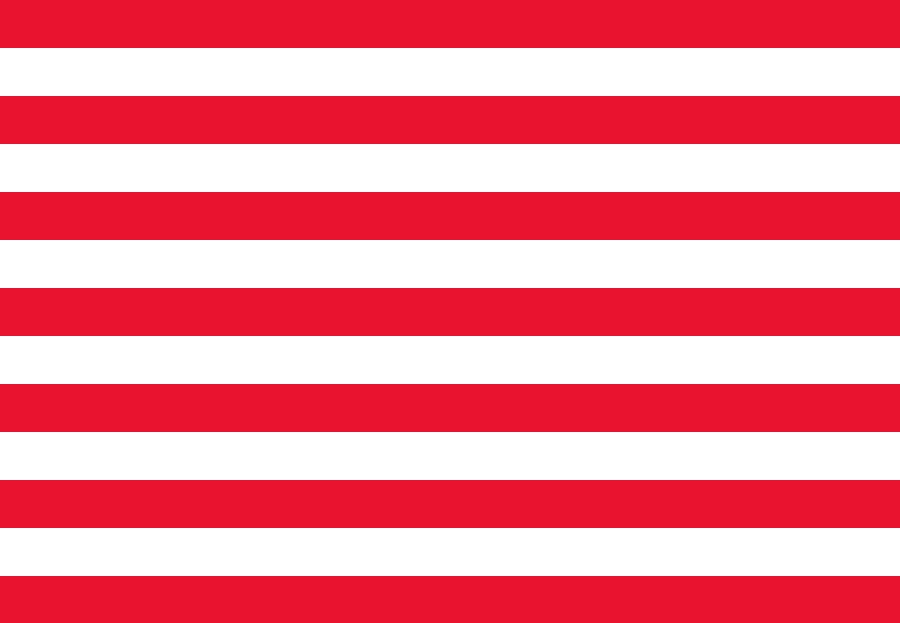


 This flag is not verified as having been an actual flag in use by the American colonists. An illustration of it was included in the book, Standards And Colors Of The American Revolution, by Edward W. Richardson, but no information was presented regarding its authenticity. Rick Wyatt, an editor of the website, Flags Of The World, likewise has presented an image of this flag, but without any sources referenced.
This flag is not verified as having been an actual flag in use by the American colonists. An illustration of it was included in the book, Standards And Colors Of The American Revolution, by Edward W. Richardson, but no information was presented regarding its authenticity. Rick Wyatt, an editor of the website, Flags Of The World, likewise has presented an image of this flag, but without any sources referenced.
 A cartoon was published in London on 08 December 1782. It presented caricatures of Great Britain, France, The Netherlands, Spain and the United States of America responding to the results of the American Revolutionary War. The female Indian, representing America, is holding a Liberty Pole from which flies a seventeen-stripe Rebel Stripes flag.
A cartoon was published in London on 08 December 1782. It presented caricatures of Great Britain, France, The Netherlands, Spain and the United States of America responding to the results of the American Revolutionary War. The female Indian, representing America, is holding a Liberty Pole from which flies a seventeen-stripe Rebel Stripes flag.
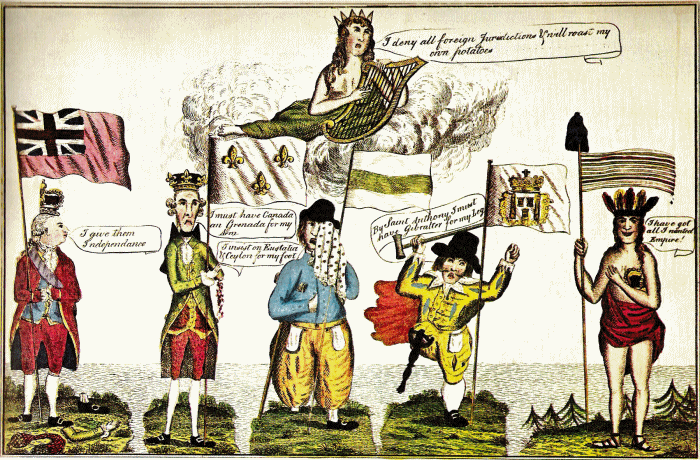
The Belligerent Plenipo's.
T: Colley, Fect: Pub by W Richardson N68 High Holborn. Decr. 8, 1782 as the Act Directs.
Hand colored etching.
This image maintained by the Library Of Congress
 A portrait of American General Horatio Gates was painted by John Morris in 1778. A mezzotint engraving was made of that painting by (probably) C. Corbutt. The portrait shows a flag behind the General, and it consists only of stripes. It is possible that the stripes in the flag were either intended to portray the Rebel Stripes, or in this engraving they are simply 'hatch' lines to define the three-dimensionality of the waving flag.
A portrait of American General Horatio Gates was painted by John Morris in 1778. A mezzotint engraving was made of that painting by (probably) C. Corbutt. The portrait shows a flag behind the General, and it consists only of stripes. It is possible that the stripes in the flag were either intended to portray the Rebel Stripes, or in this engraving they are simply 'hatch' lines to define the three-dimensionality of the waving flag.
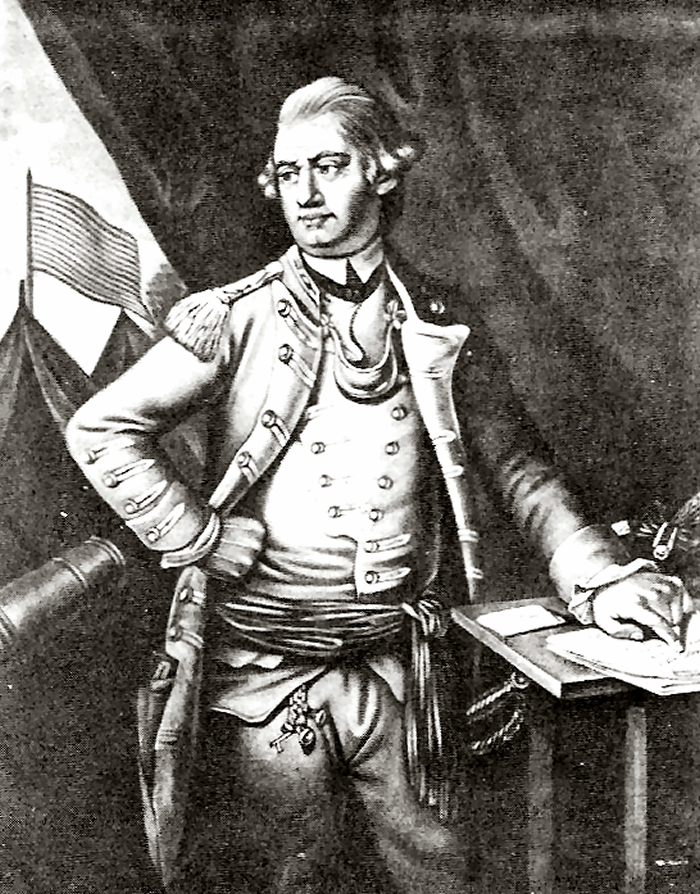
Horatio Gates, Esqr. Major General of the American Forces.
Publish'd as the Act directs 2nd Jany 1778 by John Morris
Mezzotint engraved by C. Corbutt
This image maintained by the Library Of Congress
 The only problem with the flag image in this portrait is that it consists of twenty-seven stripes: fourteen 'red' and thirteen 'white'.
The only problem with the flag image in this portrait is that it consists of twenty-seven stripes: fourteen 'red' and thirteen 'white'.
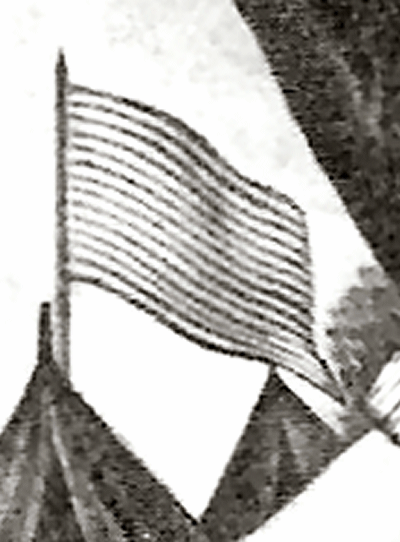
Detail.
 A mezzotine engraving made from a portrait of Commodore Esek Hopkins painted by Thomas Hart at London in 1776 was later copied. This particular engraving was copied by a German printer in 1778. The flag, which, in the original painting and initial engraving, consisted of the Rebel Stripes on which was an outstretched rattlesnake, is represented here as simply the Rebel Stripes with the exception that the outer stripes are white rather than red.
A mezzotine engraving made from a portrait of Commodore Esek Hopkins painted by Thomas Hart at London in 1776 was later copied. This particular engraving was copied by a German printer in 1778. The flag, which, in the original painting and initial engraving, consisted of the Rebel Stripes on which was an outstretched rattlesnake, is represented here as simply the Rebel Stripes with the exception that the outer stripes are white rather than red.
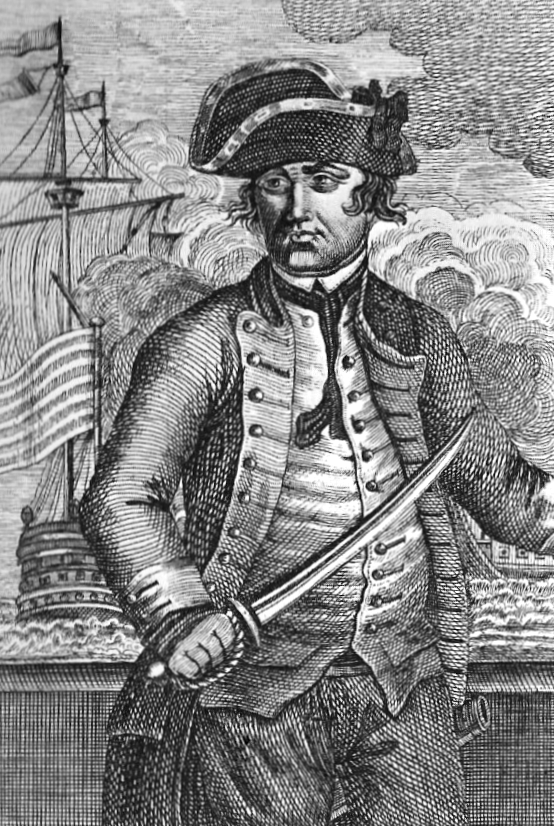
Commodore Hopkins. Commandeur en Chef der Amerj: Flotte.
This image maintained by the Library Of Congress
 It is possible that an assumption was made by Richardson and Wyatt, and perhaps others, that as the number of colonies increased to thirteen, and stripes needed to be added to the original nine of the Sons Of Liberty flag, it would have to be turned sideways to accomodate the increased number of stripes.
It is possible that an assumption was made by Richardson and Wyatt, and perhaps others, that as the number of colonies increased to thirteen, and stripes needed to be added to the original nine of the Sons Of Liberty flag, it would have to be turned sideways to accomodate the increased number of stripes.
 A more plausible explanation for the horizontal orientation of the stripes in the Rebel Stripes Flag comes from a resolution of the Second Continental Congress. On 14 June 1777, the first resolution regarding a national flag was passed by the delegates meeting in the Second Continental Congress which stated: "Resolved, that the flag of the thirteen United States be thirteen stripes, alternate red and white: that the union be thirteen stars, white in a blue field, representing a new constellation." In view of the fact that subsequent flags were based on fields of horizontal stripes, there is no reason to assume that this first flag proposed by the Congress would have been different, as it apparently set the precedent.
A more plausible explanation for the horizontal orientation of the stripes in the Rebel Stripes Flag comes from a resolution of the Second Continental Congress. On 14 June 1777, the first resolution regarding a national flag was passed by the delegates meeting in the Second Continental Congress which stated: "Resolved, that the flag of the thirteen United States be thirteen stripes, alternate red and white: that the union be thirteen stars, white in a blue field, representing a new constellation." In view of the fact that subsequent flags were based on fields of horizontal stripes, there is no reason to assume that this first flag proposed by the Congress would have been different, as it apparently set the precedent.
 The Rebel Stripes was flown on ships into the 1790s.
The Rebel Stripes was flown on ships into the 1790s.

